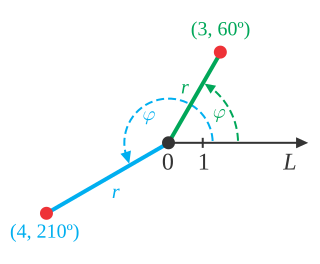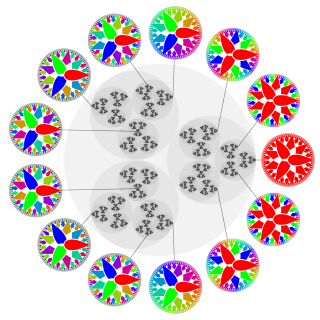Method
The following exposition assumes that the numbers are broken into two-digit pieces, separated by commas: e.g. 3456 becomes 34,56. In general x,y denotes x·100 + y and x,y,z denotes x·10000 + y·100 + z, etc.
Suppose that we wish to divide c by a, to obtain the result b. (So a × b = c.)

Note that a1 may not have a leading zero; it should stand alone as a two-digit number.
We can find the successive terms b1, b2, etc., using the following formulae:




Each time we add a term to the numerator until it has as many terms as a. From then on, the number of terms remains constant, so there is no increase in difficulty. Once we have as much precision as we need, we use an estimate to place the decimal point.
It will often be the case that one of the b terms will be negative. For example, 93,−12 denotes 9288, while −16,32 denotes −1600 + 32 or −1568. (Note: 45,−16,32 denotes 448432.) Care must be taken with the signs of the remainders also.
The general term is

Partial quotients with more than two digits
In cases where one or more of the b terms has more than two digits, the final quotient value b cannot be constructed simply by concatenating the digit pairs. Instead, each term, starting with  should be multiplied by 100, and the next term added (or, if negative, subtracted). This result should be multiplied by 100, and the next term added or subtracted, etc., until all terms are exhausted. In other words, we construct partial sums of the b terms:
should be multiplied by 100, and the next term added (or, if negative, subtracted). This result should be multiplied by 100, and the next term added or subtracted, etc., until all terms are exhausted. In other words, we construct partial sums of the b terms:


The last partial sum is the value for b.
In mathematics and computer programming, exponentiating by squaring is a general method for fast computation of large positive integer powers of a number, or more generally of an element of a semigroup, like a polynomial or a square matrix. Some variants are commonly referred to as square-and-multiply algorithms or binary exponentiation. These can be of quite general use, for example in modular arithmetic or powering of matrices. For semigroups for which additive notation is commonly used, like elliptic curves used in cryptography, this method is also referred to as double-and-add.

Multiplication is one of the four elementary mathematical operations of arithmetic, with the other ones being addition, subtraction, and division. The result of a multiplication operation is called a product.

In mathematics, the polar coordinate system is a two-dimensional coordinate system in which each point on a plane is determined by a distance from a reference point and an angle from a reference direction. The reference point is called the pole, and the ray from the pole in the reference direction is the polar axis. The distance from the pole is called the radial coordinate, radial distance or simply radius, and the angle is called the angular coordinate, polar angle, or azimuth. Angles in polar notation are generally expressed in either degrees or radians.

Stoichiometry refers to the relationship between the quantities of reactants and products before, during, and following chemical reactions.

In mathematics, the p-adic number system for any prime number p extends the ordinary arithmetic of the rational numbers in a different way from the extension of the rational number system to the real and complex number systems. The extension is achieved by an alternative interpretation of the concept of "closeness" or absolute value. In particular, two p-adic numbers are considered to be close when their difference is divisible by a high power of p: the higher the power, the closer they are. This property enables p-adic numbers to encode congruence information in a way that turns out to have powerful applications in number theory – including, for example, in the famous proof of Fermat's Last Theorem by Andrew Wiles.

In mathematics and computer science, the floor function is the function that takes as input a real number x, and gives as output the greatest integer less than or equal to x, denoted floor(x) or ⌊x⌋. Similarly, the ceiling function maps x to the least integer greater than or equal to x, denoted ceil(x) or ⌈x⌉.

In linear algebra, a symmetric matrix is a square matrix that is equal to its transpose. Formally,
In mathematics, particularly in linear algebra, a skew-symmetricmatrix is a square matrix whose transpose equals its negative. That is, it satisfies the condition
In linear algebra, the adjugate or classical adjoint of a square matrix is the transpose of its cofactor matrix. It is also occasionally known as adjunct matrix, though this nomenclature appears to have decreased in usage. The adjugate has sometimes been called the "adjoint", but today the "adjoint" of a matrix normally refers to its corresponding adjoint operator, which is its conjugate transpose.
In recreational mathematics, a repunit is a number like 11, 111, or 1111 that contains only the digit 1 — a more specific type of repdigit. The term stands for repeated unit and was coined in 1966 by Albert H. Beiler in his book Recreations in the Theory of Numbers.
In mathematics, an nth root of a number x is a number r which, when raised to the power n, yields x:
The quater-imaginary numeral system was first proposed by Donald Knuth in 1960. It is a non-standard positional numeral system which uses the imaginary number 2i as its base. It is able to (almost) uniquely represent every complex number using only the digits 0, 1, 2, and 3.
In number theory, Aleksandr Yakovlevich Khinchin proved that for almost all real numbers x, coefficients ai of the continued fraction expansion of x have a finite geometric mean that is independent of the value of x and is known as Khinchin's constant.

The Doomsday rule, Doomsday algorithm or Doomsday method is an algorithm of determination of the day of the week for a given date. It provides a perpetual calendar because the Gregorian calendar moves in cycles of 400 years. The algorithm for mental calculation was devised by John Conway in 1973, drawing inspiration from Lewis Carroll's perpetual calendar algorithm. It takes advantage of each year having a certain day of the week upon which certain easy-to-remember dates, called the doomsdays, fall; for example, the last day of February, 4/4, 6/6, 8/8, 10/10, and 12/12 all occur on the same day of the week in any year. Applying the Doomsday algorithm involves three steps: Determination of the anchor day for the century, calculation of the anchor day for the year from the one for the century, and selection of the closest date out of those that always fall on the doomsday, e.g., 4/4 and 6/6, and count of the number of days between that date and the date in question to arrive at the day of the week. The technique applies to both the Gregorian calendar and the Julian calendar, although their doomsdays are usually different days of the week.
A divisibility rule is a shorthand and useful way of determining whether a given integer is divisible by a fixed divisor without performing the division, usually by examining its digits. Although there are divisibility tests for numbers in any radix, or base, and they are all different, this article presents rules and examples only for decimal, or base 10, numbers. Martin Gardner explained and popularized these rules in his September 1962 "Mathematical Games" column in Scientific American.
Error catastrophe refers to the cumulative loss of genetic information in a lineage of organisms due to high mutation rates. The mutation rate above which error catastrophe occurs is called the error threshold. Both terms were coined by Manfred Eigen in his mathematical evolutionary theory of the quasispecies.
Methods of computing square roots are numerical analysis algorithms for approximating the principal, or non-negative, square root of a real number. Arithmetically, it means given , a procedure for finding a number which when multiplied by itself, yields ; algebraically, it means a procedure for finding the non-negative root of the equation ; geometrically, it means given two line segments, a procedure for constructing their geometric mean.
A decimal representation of a non-negative real number r is its expression as a sequence of symbols consisting of decimal digits traditionally written with a single separator:

Plasma parameters define various characteristics of a plasma, an electrically conductive collection of charged particles that responds collectively to electromagnetic forces. Plasma typically takes the form of neutral gas-like clouds or charged ion beams, but may also include dust and grains. The behaviour of such particle systems can be studied statistically.
A repeating decimal or recurring decimal is decimal representation of a number whose digits are periodic and the infinitely repeated portion is not zero. It can be shown that a number is rational if and only if its decimal representation is repeating or terminating. For example, the decimal representation of 1/3 becomes periodic just after the decimal point, repeating the single digit "3" forever, i.e. 0.333.... A more complicated example is 3227/555, whose decimal becomes periodic at the second digit following the decimal point and then repeats the sequence "144" forever, i.e. 5.8144144144.... At present, there is no single universally accepted notation or phrasing for repeating decimals.




















